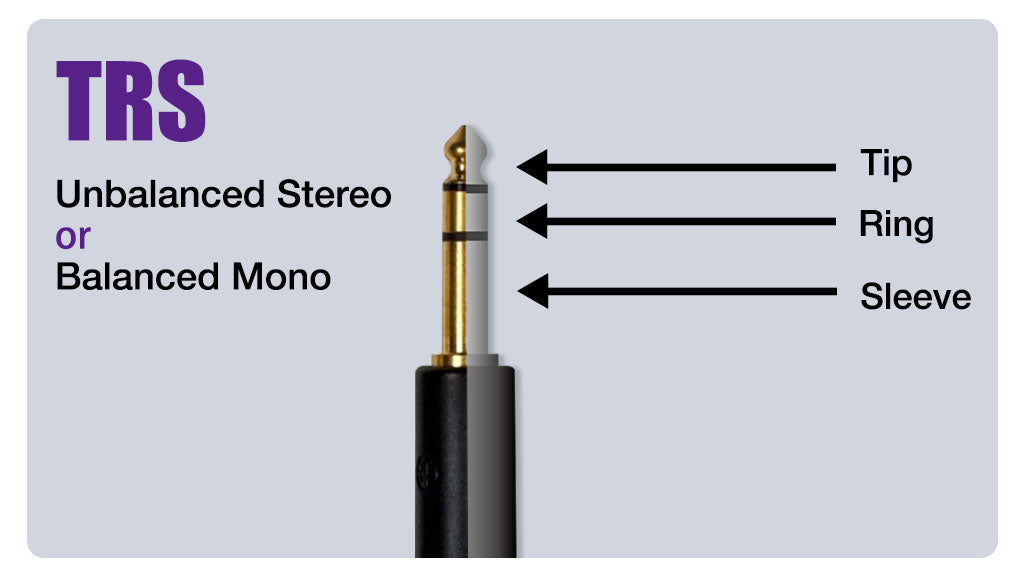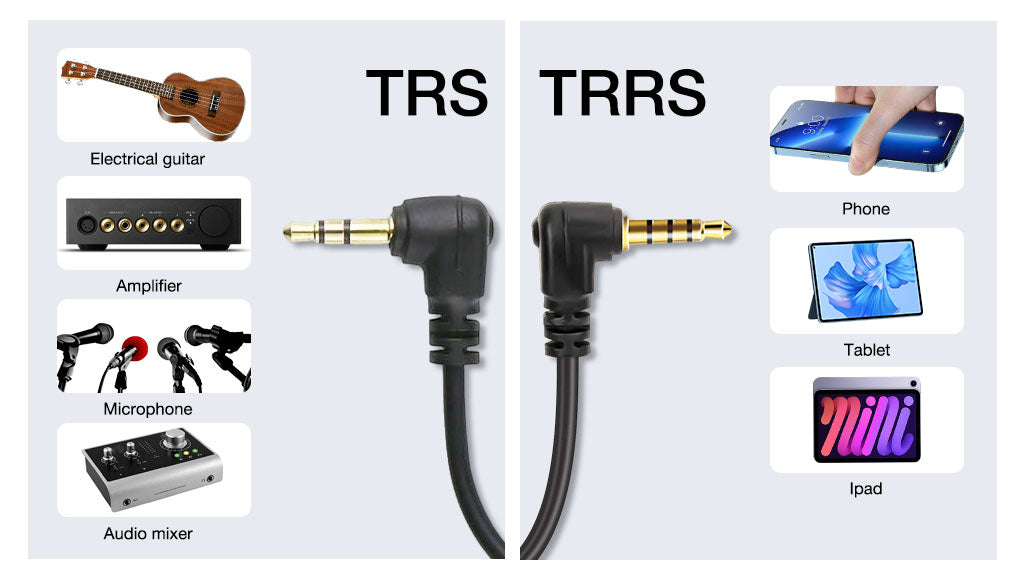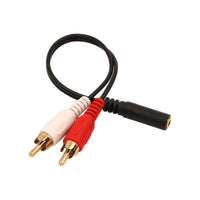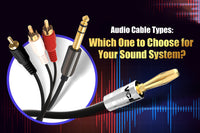Contents
Audio cable connectors are mainly used to transmit audio signals and two commonly used cables are TRS and TRRS. TRS and TRRS connectors may look alike, but their slight differences make them suitable for different applications. Telling them apart is very essential when you want to set up your audio systems. If you're looking for the differences between TRS and TRRS, you're in the right place. We'll delve into everything about TRS and TRRS and discuss which one you should pick for your specific needs.
What is TRS?
The TRS originates from its structure: Tip, Ring, and Sleeve. The tip refers to the metal component at the end, the middle section is the ring, and the long metal part is termed the sleeve. Typically, these three components are divided by two black bands to minimize interference between them.

The extra contact part makes the TRS cable have both negative and positive cables, allowing it to support both balanced and unbalanced audio. TRS is available in different sizes, including 1/4-inch, 1/8-inch (3.5mm), and 1/16-inch (2.5mm). 1/4-inch TRS cables are generally used for balanced audio applications such as microphones and amplifiers. 3.5mm TRS cables transmit stereo signals, which can carry both left and right signals.
What is TRRS?
The TRRS is an abbreviation for Tip-Ring-Ring-Sleeve, just as its name implies, the TRRS has an extra ring compared to the TRS. The four conductors enable the simultaneous transmission of audio signal and microphone signal. One of the typical uses of TRRS is for video with stereo audio. The most commonly used size of TRRS cables is 3.5mm, which is a standard for smartphones and mobile devices.

There are two standards for TRRS, including American Headset Jack (AHJ/CTIA), and OMTP. CTIA became the standard because of the popularity of Apple products. These standards define the configuration of the TRRS connector differently.
In the AHJ or CTIA standard, the tip and first ring are used for left and right audio, the second ring is connected to the ground and the sleeve is used for transmitting the microphone signal.
In contrast, the OMTP standard reverses the role of the second ring and sleeve. The second ring carries the microphone signal and the sleeve controls the ground connection. OMTP is an older standard and it is less prevalent today.
Note: What is TS?
The TS represents Tip-Sleeve, which is the most basic type of audio cable. Also known as instrument cables or electrical guitar cables, TS cables are usually used for mono, unbalanced signals.
TRS vs TRRS: What Are the Differences?
Now that we know what are TRS and TRRS cables and connectors, let’s explore their key differences.
Number of contacts
The most obvious difference between TRS and TRRS lies in the number of contacts. TRS has three contacts, while TRRS has four. With its additional conductors, TRRS can carry both audio and microphone signals.
Compatibility
Typically, TRS and TRRS connectors can be interchanged and plugged into their sockets, as long as their sizes match. For example, if you insert a TRS connector into a TRRS socket, the speaker function won't be available, but the microphone signal will be active on your device.
Balanced or Unbalanced
In general, cables with only a contact tip for the shield and one signal are often unbalanced; while balanced cables usually transmit positive and negative signals. "1/4-inch" and 3.5mm TRS connectors are often used for balanced audio applications. However, if they are used to transmit stereo signals via a single cable, they are not considered balanced.
TRRS cables are typically used for stereo unbalanced signals, particularly for headphones with microphones and hands-free headsets.
TRS vs TRRS: Which Is Right for Your Audio Needs?
TRS or TRRS, which one is suitable for your audio needs? It depends on your requirements for audio experience.
In general, TRS cables are commonly used for stereo audio applications, including headphones, speakers, amplifiers, music instruments, and audio interfaces. They are also suitable for carrying line-level signals in professional audio setups. While TRRS cables are designed for smartphone headsets, voice recording, and hands-free kits.
For example, TRS can be more proper than TRRS for connecting instruments to amplifiers. But if you want to connect your guitar to an amplifier in a live performance, TS may be the best choice.
Sometimes, TRS or TRRS won't be a problem as there is a wide range of adapters or patch cables on the market, such as 1/4-inch to 1/8-inch TRS connectors, TRRS to TRS adapters and TRS to TRRS patch cables. For instance, if you want to connect smartphone or tablet to your TRS microphone, you can use a TRRS to TRS adapter for better audio effects.

Conclusion
TRS and TRRS connectors are both essential components in the audio world. After reading this article, We know that TRS cables are sufficient to offer stereo audio output for professional setups. While TRRS cables can be suitable for most modern devices that handle both stereo and microphone inputs. If you can understand their differences, this will help you make informed decisions when choosing the right audio connector for your needs.
FAQs
Will TRS Headphones work with My TRRS Device?
Yes. It’s fine to connect TRS headphone to your TRRS socket on your phone without a microphone.
Is TRRS better than TRS?
TRS and TRRS are suited to specific audio needs. While TRS connectors are optimal for balanced audio, TRRS connectors excel in stereo audio applications. Both are valuable depending on your audio requirements.
Can I plug an unbalanced cable into a balanced input?
Yes, you can. For example, if you plug a 1/4-inch TS into a 1/4-inch TRS balanced jack, it still works. However, the result is typically an unbalanced signal with more noise.
For more information on this topic, you can keep up on our blogs. While VCELINK offers general and basic information for our customers and other visitors to the website, it’s not professional advice.





Thank you for a really helpful article. There’s lots of stuff on the web about using an external mic with iphone, but they neglect to mention that you can be caught out by the fact that there are two TRRS formats. £3.50 for a CTIA/OMTP converter will save me spending loads on a new microphone.